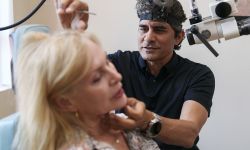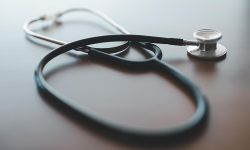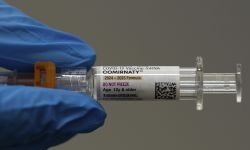Sewer poop: it’s not just for COVID testing anymore
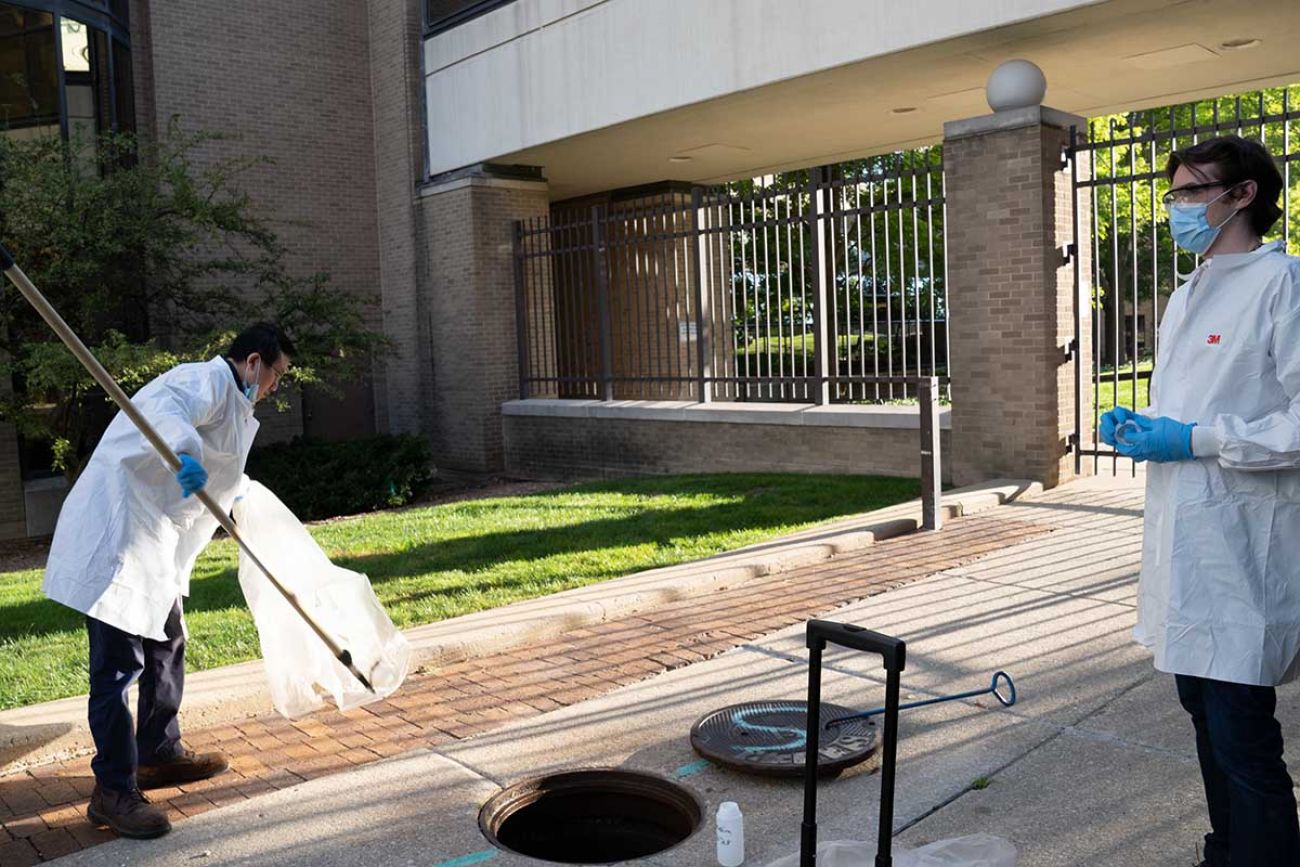
- Wastewater surveillance served as an early warning system for outbreaks of COVID during the pandemic
- Researchers are now expanding testing of human waste in sewers to look for monkeypox, flu and other illnesses
- It’s a foul job, but can ultimately save lives, researchers say.
ANN ARBOR—The early morning sky has lightened to a soft-gray in downtown Ann Arbor.
Olivia Yancey notches a blue crowbar into a manhole cover, heaving it from its place with a thick metallic scrape and a cast-iron-against-asphalt thud. Cockroaches skitter from the rim.
She and her coworkers are on the hunt. The team is among a growing number of scientists and lab technicians conducting what they call PPE: “poo and pee epidemiology.”
Related:
- Michigan COVID super-dodgers: Lucky genetics or just plain lucky?
- Michigan COVID booster appointments filling up. How to get yours.
- Should you get a flu shot and COVID booster at the same time?
When your work derives from foul liquid gurgling beneath a manhole cover, there’s a kind of weird humor that develops.
“It can get pretty awful in the hot summer. You find ways to laugh,” said Yancey, 25, a senior laboratory technician.
For two years, wastewater surveillance crews in Michigan have been on the lookout for COVID. But in recent months, their mission has broadened to include other diseases such as flu, monkeypox, norovirus, a leading cause of foodborne illness, and — in the coming weeks — polio.
Credit the coronavirus pandemic for wastewater’s growing role in tracking emerging threats to public health.
Two years ago, the U.S. Centers for Disease Control and Prevention established the National Wastewater Surveillance System to monitor wastewater sites in communities across the nation for SARS-CoV-2, the virus that causes COVID-19. Michigan was among 37 states that received funds.
A sizable minority of people infected with COVID-19 will shed the virus’ genetic material in their stool, according to a 2020 analysis of several studies published in the Journal of the American Medical Association. Wastewater surveillance, then, can serve as an early warning signal of the virus’ spread, often before an outbreak makes itself known through testing or a rise in hospitalizations.
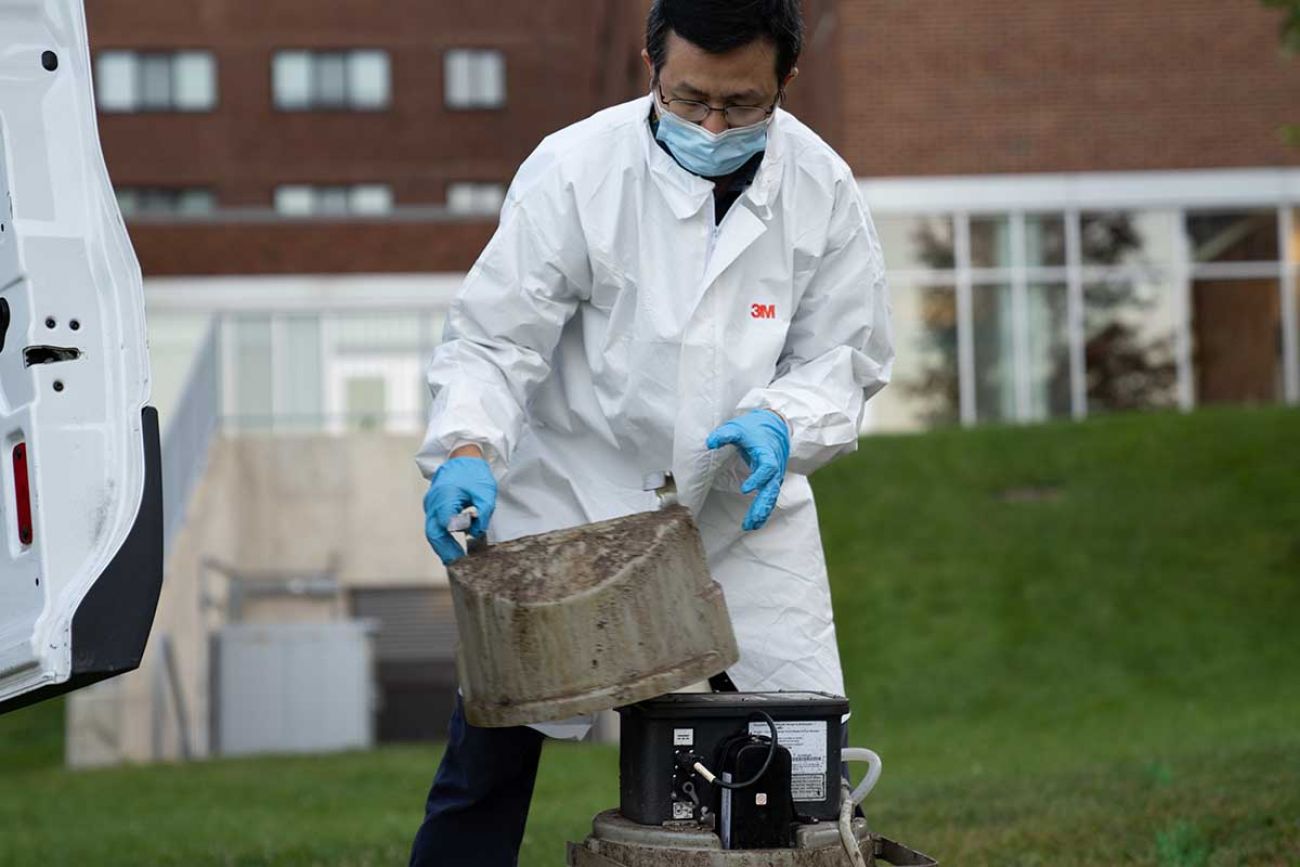
Poop samples have presaged new outbreaks of COVID on the University of Michigan campus, said Chuanwu Xi, an expert in environmental microbiology and health at the University of Michigan, which oversees campus wastewater research projects.
Every time Xi’s lab detected increases in COVID virus in the wastewater, there was a bump in reported cases on the campus about two days later, he said. That is, genetic fragments of the coronavirus flushed into Xi’s vials about 48 hours before people developed symptoms or tested positive.
The success of wastewater testing — along with the new lab techs and protocols developed, thanks to the federal funding — allowed scientists to envision possibilities beyond COVID. In June of last year, the Michigan Department of Health and Human Services divided $49 million in CDC funding among 19 wastewater projects around the state. The efforts were led, in large part, by Michigan’s universities and colleges.
Another U-M researcher, Krista Wigginton, associate professor of civil and environmental engineering, credited the funding for giving her three more staff for her lab’s wastewater surveillance and expanding testing to Ann Arbor, Ypsilanti and Flint.
“COVID basically helped build up the infrastructure,” said Marisa Eisenberg, an associate professor of epidemiology and complex systems at U-M, who works with Xi’s and Wigginton’s teams.
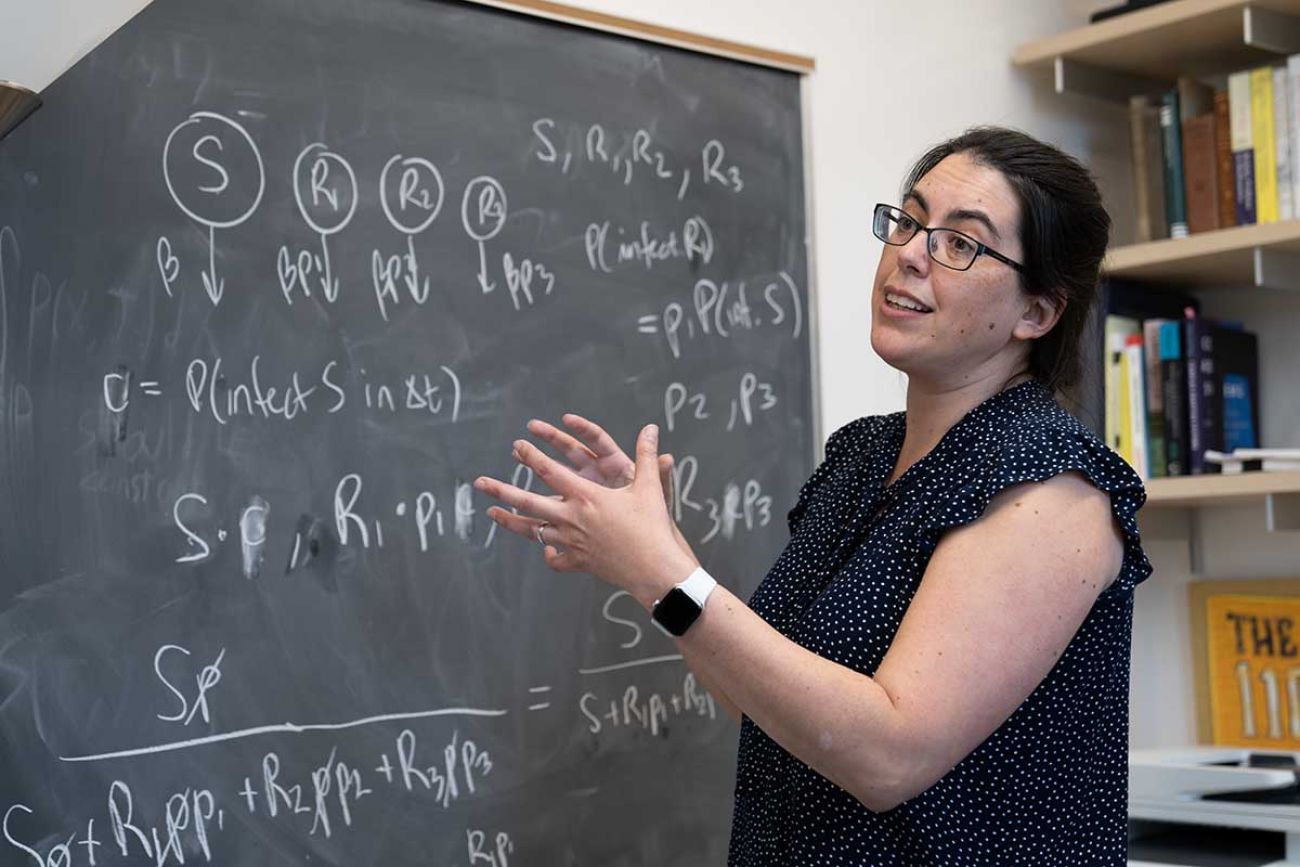
Wastewater surveillance can help, red flagging “hot spots for risk” even before a community recognizes there is an outbreak, Eisenberg said. That gives hospitals and public health experts a jump on allocating resources, while alerting doctors to watch for symptoms and intervene early.
Eisenberg was on the ground in Israel as a U-M researcher in 2014, when health officials first detected polio through wastewater monitoring in plants that served about one-third of the country’s population. The result was a national vaccination campaign.
Back in Michigan, Eisenberg and others recognized the broader utility of wastewater testing.
“So why not monitor for all these different pathogens as a way to keep an eye on what's going on in a community?” Eisenberg said. “I think there's a lot of really interesting possibilities.”
In fact, Xi’s lab will soon expand to begin monitoring for polio. Team members are ironing out lab processes and waiting for supplies, he said, but could be testing “in a couple of weeks.”
One of his students is also working out protocols to surveil for illicit drugs, antidepressants and the metabolites of alcohol — possible indicators of a community’s well being, said Xi.
Wastewater surveillance remains critical for charting COVID’s path, even as other pandemic metrics, such test positivity rates, become less useful.
Testing wastewater has its limits, of course. It measures community trends for public health officials. But it cannot replace individual patients’ trips to the doctor, test results, and other diagnosing techniques of disease, Xi said.
“This is information that’s not necessary to collect at an individual level — and it reveals the health of a community, while we step around privacy concerns, too,” Xi said.

Not for the squeamish
Testing begins by dipping sticks and bottles into what the rest of us have flushed from our consciousness.
Lab technician Christopher Breen wears his oldest, grungiest pair of jeans on collection days: “When people ask me what I do, I usually say ‘I monitor for COVID.’ I don’t usually say right away that ‘yeah, my hands touch sewage every day.’”
This is a Tuesday, their longest day. The team will collect samples from 14 sites in all.
A moment after the white van pulls up outside fraternity and sorority houses, dining halls and residence buildings where students are undoubtedly sleeping, three pairs of steel-toed boots hit the ground.
Caution cones are dropped down onto the pavement; masks are pulled up, and blue gloves slide onto practiced hands.
Wielding a black Sharpie, Breen scribbles date and location in a new collection bottle at every stop.
At some stops, the team pulls from the depths an automatic sampling jug that is timed to collect water every 15 minutes. At other times, collection is more rudimentary: A team member plunges a plastic bottle zip-tied to the end of a pole into the liquid gurgling below.
All of this means facing down unpleasant odors.
“You hold your breath and work faster,” Breen says.
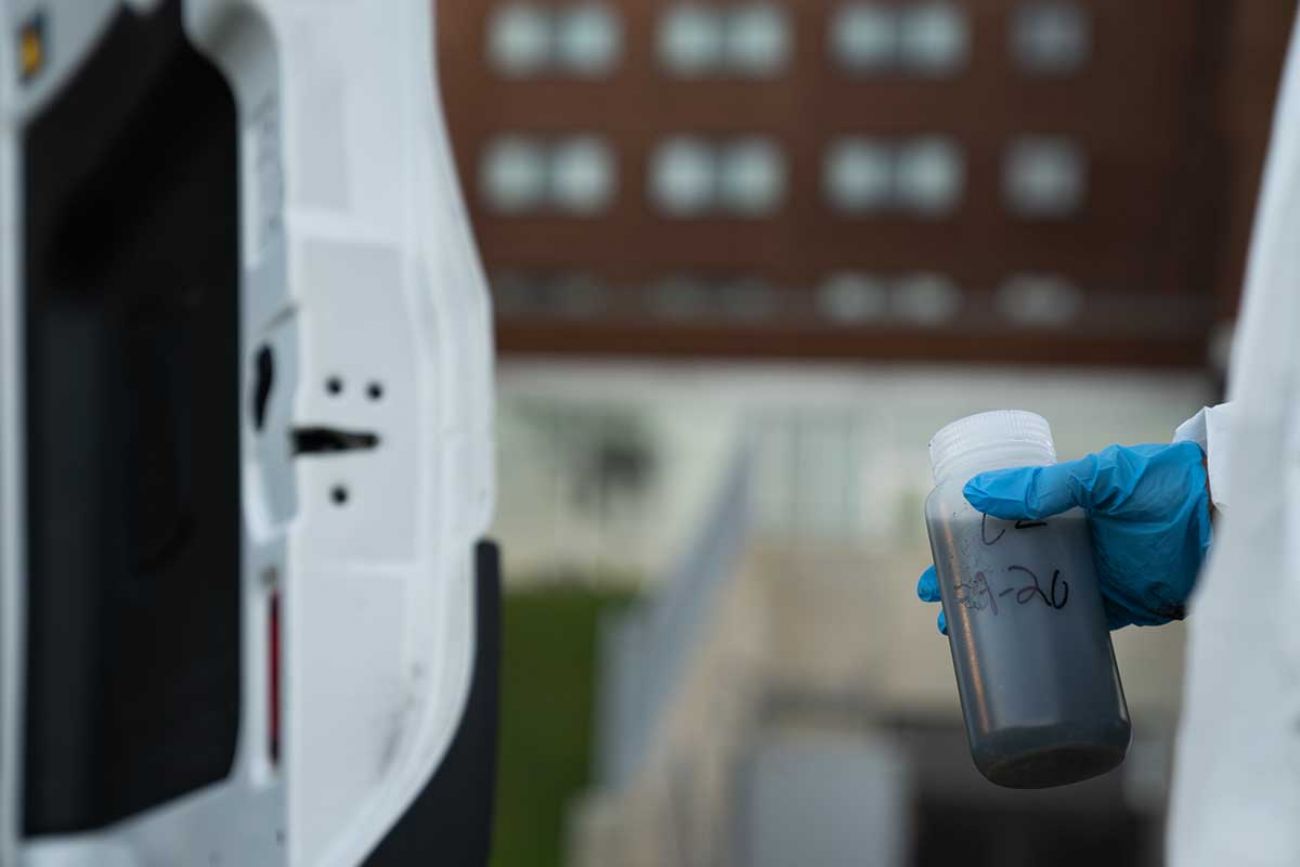
“We’re always trying to beat our own record” for completing the morning’s work, Yancey says as she drives onto a walkway, past the morning’s first backpack-wearing, coffee-clutching students.
“I think our record is 8:02,” she says.
But vans can get stuck in the mud. Carabiner clips freeze in winter. Wires snap, plunging monitoring equipment into the depths — a mishap requiring tubing, hooks and a deft hand to fish the equipment back to ground level.
Finding a way out of such fixes requires ingenuity.
“There’s a lot of MacGyvering in field work,” she says, bouncing over a grassy lawn. “It’s fun.”
Amplifying risk
Back in the lab several hours later, the team’s routines are as well-worn as those in the field.
Breen creates a mix of sodium chloride and polyethylene glycol to filter the liquid, reducing its materials to a microscopic pellet. The pellet is searched for genetic material through a polymerase chain reaction machine that amplifies the genetic materials — the same technique used for PCR testing for COVID.
Several hours later, Jianfeng Wu, who supervises the collection teams in Xi’s lab, will study graphs and numbers from the genetic tell-tale strands of COVID, influenza or monkeypox — data that biostatisticians will interpret.
As it turns out: No monkeypox is found on this day. Luckily, it has yet to show up in any samples this lab has collected. And that is good: While the goal is to find pathogens, the hope is they do not.

It’s mind-numbing work at times, Yancey says. She is transferring specimens into individual vials, but it will be hours, sometimes days, before it’s clear what’s inside.
“But when I sit here and I start to get bored, that’s what I try to keep in mind,” Yancey said. “All of this,” she said, waving her gloved hand to the lab, “is what can help keep us safe.”
See what new members are saying about why they donated to Bridge Michigan:
- “In order for this information to be accurate and unbiased it must be underwritten by its readers, not by special interests.” - Larry S.
- “Not many other media sources report on the topics Bridge does.” - Susan B.
- “Your journalism is outstanding and rare these days.” - Mark S.
If you want to ensure the future of nonpartisan, nonprofit Michigan journalism, please become a member today. You, too, will be asked why you donated and maybe we'll feature your quote next time!


